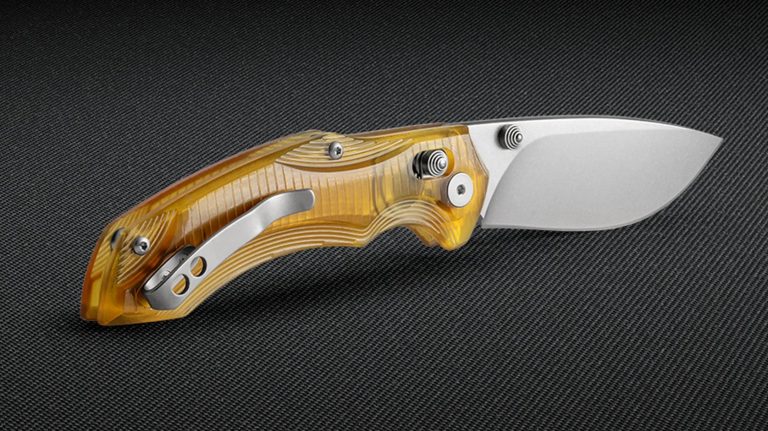The Story of This Iconic Lounge Chair Is More Interesting Than the Design Itself

We’re now well over a half-century past the heyday of mid-century modern design, and yet the style remains the epitome of cool. Even in 2023, go watch any movie, television show, music video or commercial that features a “cool” character and you’ll find a plethora of designer furniture that originated in the 1950s and ’60s populating their timelessly stylish space. All of the hottest online DTC furniture brands, like Floyd, Article, Burrow and others, hang their hat on their sleek, MCM-inspired designs.
And without question, the most enduring aspect of mid-century modern design has got to be the chairs. It’s safe to say that chair design peaked around 70 years ago, when luminaries like Charles and Ray Eames, Eero Saarinen, Hans Wegner and scores of other designers were sculpting gorgeous places to sit. Today, these designers are intrinsically linked with their chair designs. The Eameses with the Eames Lounge Chair. Saarinen with the Womb Chair. Wegner with his Shell Chair.
It’s safe to say that chair design peaked 70 years ago.
But there is one classic mid-century modern chair out there whose origin remains a mystery. Made up of an exposed solid walnut or teak frame with a slight recline and two loose rectangular cushions, the chair almost looks like a more extreme version of Jens Risom’s Jens Chair, with a style that just screams 1950s Danish modern and a whimsical edge that could have only been created during the Atomic Age. While it goes by many names, this chair is most commonly referred to as the Z Lounge Chair, so called for the dramatic way the sharp-angled arms and legs come together in the exposed wood frame in the shape of a “Z” when viewed from the side.
You have most definitely seen one before, as just about every staged mid-century modern home for sale online has one and many major furniture brands today make a version of it. Article calls theirs the Otio, Inside Weather has the Ace, Industry West sells the Penny, Joybird makes the Soto, and both Amazon and Wayfair sell countless versions of the Z Lounge Chair. These interpretations offer slight variations on the form, but it’s pretty undeniable what look they’re all going for. Perhaps it’s the overall lack of knowledge — and copyright — about the Z Chair’s provenance that has led to its prevalence. But I figured it was time to give the designer of this chair their due.
The Mysterious Poul Jensen
There is a lot of conflicting information online (surprise) when it comes to the Z Lounge Chair and who designed it, but most vintage models make a few things clear.
First is that early models of the chair, perhaps even the earliest, seem to date to the 1950s and were manufactured in Denmark by a now-defunct furniture brand called Selig. You’ll find examples like this all over sites like 1st Dibs and Chairish, where they frequently sell for anywhere between $2,000 and $4,000 a pop.
Second is that most of the listings — particularly the pricier chairs — attribute the chair to a designer named Poul Jensen. So that’s it then, another mystery solved. Good night, everybody!
The thing about Poul Jensen is that he’s a ghost.
Not so fast. The thing about Poul Jensen is that he’s a ghost. I don’t mean that in the literal sense — though if he were designing furniture in the 1950s then he very well could be an actual spirit by now — I mean that there is basically no information out there on this guy. Anywhere. Ostensibly the designer of an iconic peice of furniture, the man’s sole presence on Wikipedia is in the following single sentence at the bottom of a disambiguation page:
Poul Thorsbjerg Jensen (1922-2006), Danish furniture designer, mostly known for designing the Z chair, sold by Selig.
The Wikipedia entry did at least make Jensen seem more like a real person. He has a middle name! And it’s Thorsbjerg! And he lived from 1922 to 2006! Still, this didn’t give me a whole lot to go on, so I had to resort to enlisting some expert help.
 Courtesy
CourtesyDominic Bradbury is a mid-century modern expert and author of Thames & Hudson’s massive tome Mid-Century Modern Design: A Complete Sourcebook. “I have to admit that I don’t have any special insights on the Z Chair,” Bradbury told me in an email. That wasn’t a huge surprise, as neither the chair nor the alleged designer are mentioned in Bradbury’s exhaustive book. But research from his new book, Mid-Century Modern Furniture offered a scaffolding to build from.
“Scissor leg chairs, including Z-framed chairs and X-framed chairs largely made of wood, were a repeated favorite among mid-century designers and makers interested in the combination of an expressive form, dynamic geometry and characterful materials,” Bradbury said. “One sees this in designs by Pierre Jeanneret, including his Model 92 Scissor Chair and Chandigarh Lounge Chairs, as well as pieces by Gianfranco Frattini for Cassina and in the work of Brazilian designer José Zanine Caldas, along with pieces of Danish furniture.”
It seems as if nearly any designer from the mid-twentieth century could have designed the Z Lounge Chair and Bradbury didn’t have any information on the ghostly Poul Jensen. Though not for lack of trying. “I did check my go-to book on Danish furniture, Lars Dybdahl’s Furniture Boom, and there is no mention of Poul Jensen or Selig,” Bradbury told me. He also advised me to try getting in touch with Danish furniture experts or the art- and design-focused auction house Wight, as the latter had some alleged Jensen designs in stock.
Up for auction on Wight’s sister site Rago was a Z Chair that they attribute to Jensen (Wight could not be reached for comment). They also give a date of birth and death for the designer of … 1905-1990. That’s considerably different from our Wikipedia dates, so not ideal. Also up for auction through Wight was an angular teak wall-mounted vanity attributed to Jensen. Dated to 1957, this was the first design I’d seen attributed to Jensen outside of the Z Chair (and larger Z Sofas). Not only that, but Wight mentions that this same mirror belongs to the permanent collection at New York’s Metropolitan Museum of Art. Certainly, this would add some credibility to Jensen’s name.
Except … not really. While The Met’s website does have a page for the vanity, there’s precious little information about it. The museum attributes the mirror, a gift to the museum from a Dr. and Mrs. Carl M. Barlow in 1981, to a Danish designer named “P. Jensen” while housing no other works from the designer and no information about him other than his name.
It all begins to make one wonder: Did Poul Jensen ever even exist?

Man or myth?
I’m not the first person to ask that. Turns out that Design Addict user cdsilva arrived at the same question in 2009. The mystery orbits around a 1957 patent.
Taking Bradbury’s advice, I got in touch with a Danish furniture expert via Los Angeles-based furniture shop Danish Modern LA. Their co-owner, Jessy C. Tzarax, sent along two scans that he had sourced online about the Z Lounge Chair’s origin, from a time and place he could not recall.
First was a scan of a US patent application for the Z Chair’s design, which was applied for in 1957 and approved in 1958. That patent lists the assignor, or seller of the patent, as “Poul Jensen, Mobelfabrika, Haslev, Denmark,” and the receiver of the patent as “Selig Manufacturing Company, Inc., Leominster, Massachussetts.” Additionally, Tzarax included a black and white photo of a Z Lounge Chair and ottoman taken from a Selig Import catalog, date unknown, where it lists the designer as Poul Jensen.

Courtesy

Courtesy
You might think office government documents including the name would be proof of some sort of existence, but the Design Addicts sleuths who came upon the same patent beg to differ. The word “mobelfabrika” translates to “furniture manufacturer,” and it seems unlikely that a furniture brand would be named “Furniture Factory,” and it’s more likely that the patent is stating that the manufacturer submitting the patent is Poul Jensen.
The theory, compellingly argued, is that “Poul Jensen” was strictly the name of a manufacturing company (which has multiple references on the now-defunct resource furnitureindex.de) and that the patent’s screwy language led others — including the American-based Selig, apparently — to assume that Jensen was the designer of the Z Lounge Chair, which would explain why the man is a ghost.
It would be a tidy explanation, but one protest complicates our hope of closure.
In 2013, one “Mette Thorsbjerg” barged into a thread that had been dormant for over a year to claim that not only did Poul Jensen exist, but that he was their father. Jensen was both a designer and owner of a furniture brand named Christian Jensen Møbelsnedkeri, Thorsbjerg claims. The company was named for Jensen’s grandfather, Thorsbjerg says, but Poul would often use his own name rather than the company’s when conducting business and lived from 1922-2006.
It’s impossible to know whether or not this is actually the offspring of the late Poul Jensen defending his honor on what was at the time a four-year-old forum thread, but it does seem like a weird thing for someone to make up. They left their email address, but unless they ever respond to my emails, our trail has run cold.
So where does this leave us? Judging from the patent and Selig catalog photo provided by Danish Modern LA, it does appear that the Z Lounge Chair originated in Denmark in the late 1950s, was produced by Selig and that the name Poul Jensen — whether as a designer or original Danish manufacturer — had something to do with its origin. Short of diving into Danish birth records, we may never know. But the mystery behind this iconic piece of design surely doesn’t make it any less stunning. If anything, it makes the Z Lounge Chair all the more captivating.
Related Topics
Source: www.gearpatrol.com






